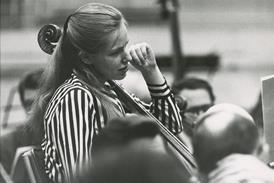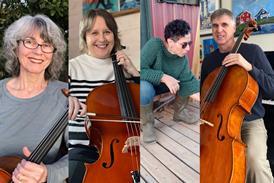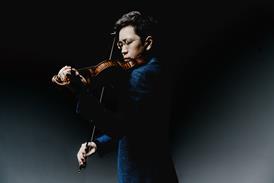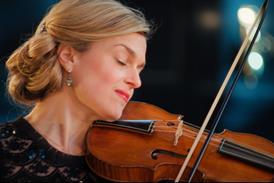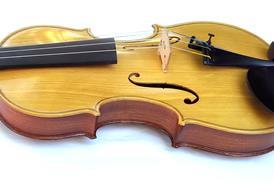- News
- For Subscribers
- Student Hub
- Playing Hub
- Podcast
- Lutherie
- Magazine
- Magazine archive
- Whether you're a player, maker, teacher or enthusiast, you'll find ideas and inspiration from leading artists, teachers and luthiers in our archive which features every issue published since January 2010 - available exclusively to subscribers. View the archive.
- Jobs
- Shop
- Directory
- Contact us
- Subscribe
- Competitions
- Reviews
- Debate
- Artists
- Accessories
Track changes

Following the emergence of minimalist music in 1960s America, some of the style’s most enduring works have been written for strings, among them Steve Reich’s Different Trains. Pwyll ap Sion finds out how performers overcome the technical and psychological challenges of playing this music
For many performers raised on the Western classical tradition, minimalism – with its repetitive patterns, looping cycles, unending scale-like figures and arpeggios, static harmony, lack of melodic shape or timbral contrast and often unvaryingly loud and relentless dynamic levels – often feels more like an endurance test than a fulfilling artistic experience. Why be forced to listen to, or play, the same thing over and over again?
Since the arrival of minimalism in America in the 1960s, the music of composers such as minimalist pioneers La Monte Young, Terry Riley, Steve Reich and Philip Glass, and those of subsequent generations like John Adams and Britain’s Gavin Bryars and Michael Nyman, has sharply divided opinions. Hypnotic or boring, beautiful or maddening, complex or primitive, the style has been embraced with passion and enthusiasm by some, while others have rejected it outright. US composer Christopher Fulkerson once stated: ‘Anyone who allows minimalism is a fraud. Its popularity is deplorable.’ Early on, minimalism was given short shrift by music critics too. New York Times correspondent Robert T. Jones concluded in 1969 that some of Glass’s early work ‘lacked even the sophistication to raise it into the class of the primitive’.
Ironically enough, a few years later Jones edited a book on Glass’s operas, which at least suggests that some critics can alter their opinions. Today, Reich and Glass, who turn 80 in October and January respectively, and John Adams, who will be 70 in February, are fêted the world over and hailed as the classical composers of our age. Their music is performed in packed concert halls and opera houses while recordings continually sell in large numbers. All three can lay claim to having changed the course of music in the 20th century.
Intertwined with the emergence of minimalism from the avant-garde ghetto of the 1960s to mainstream success by the 1980s has been its composers’ preoccupation with writing for strings. La Monte Young’s radical Trio for Strings (1958) is often regarded as the first bonafide minimalist composition. The hour-long work is created out of long held notes interspersed with occasional silences. It seems an obvious point to make, but in developing this form of drone-based minimalism it made complete practical sense for Young to write for instruments that could sustain sounds indefinitely. It set the tone for the future, with stringed instruments featuring in everything from violist John Cale’s visceral drones in Young’s ensemble the Theatre of Eternal Music at one end of the minimalist spectrum, to Adams’s coruscating, virtuosic Violin Concerto (1993) at the other – despite the fact that none of minimalism’s main composers were string players themselves.
Glass’s groundbreaking first opera Einstein on the Beach (1976) contains large sections of music for solo violin, played in the opera by a violinist dressed up as Einstein. Since then the repertoire has grown and grown. There are now enough string quartets in the minimalist repertoire to sustain any group. Reich, Riley, Glass, Adams, Bryars and Nyman have all produced important quartet compositions; and when one starts to include the post- and ‘spiritual’ minimalists, the list goes on and on: Henryk Górecki, Vladimir Martynov, Valentin Silvestrov, Kevin Volans, Michael Gordon, David Lang, Julia Wolfe, Andrew Poppy, Steve Martland, Graham Fitkin and Donnacha Dennehy, to name just a few.
For those new to playing minimalist music, what follows is a step-by-step guide in seven parts, exploring what to look out for in the music, its challenges and its potential pitfalls, how to prepare for playing it, and how to approach finding an individual interpretation.
Already subscribed? Please sign in
Subscribe to continue reading…
We’re delighted that you are enjoying our website. For a limited period, you can try an online subscription to The Strad completely free of charge.
* Issues and supplements are available as both print and digital editions. Online subscribers will only receive access to the digital versions.





